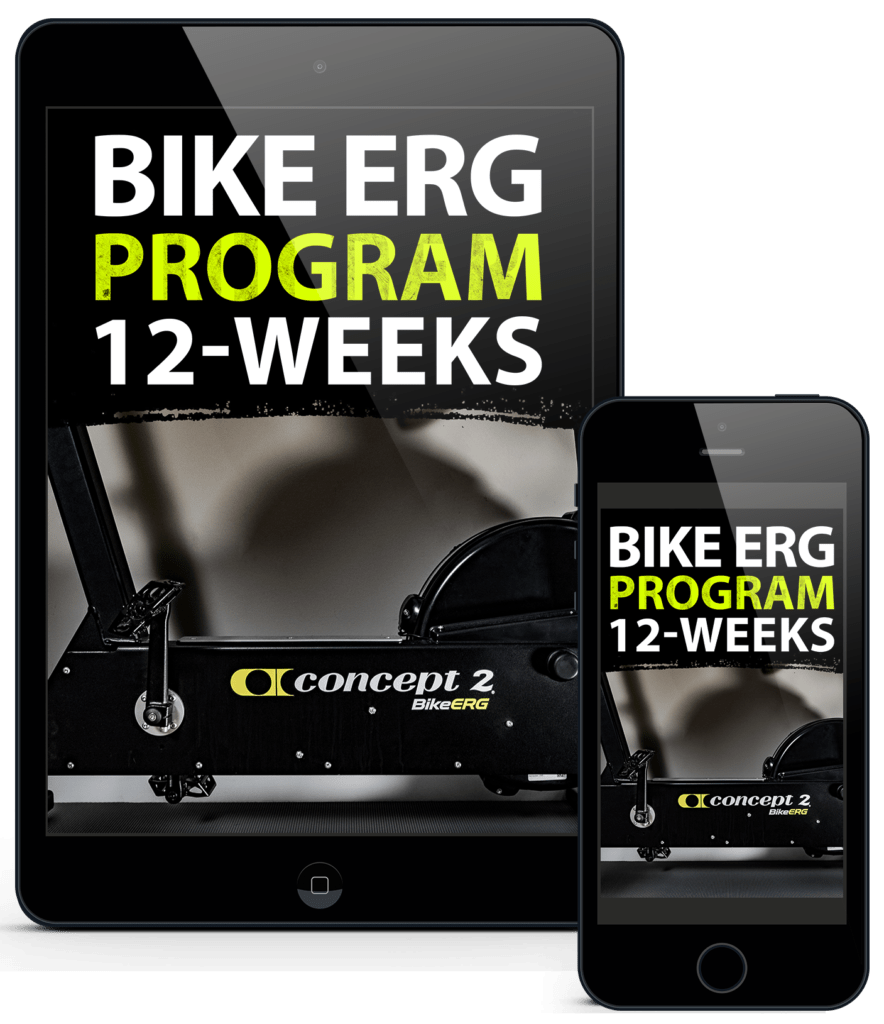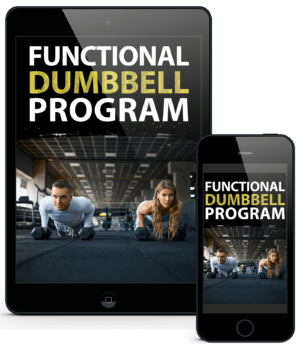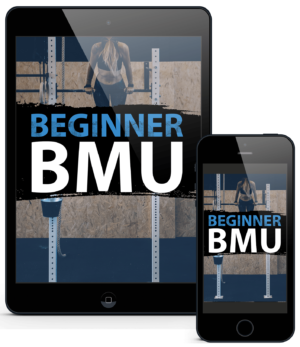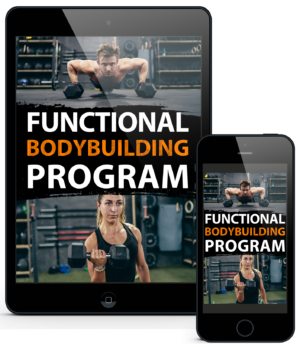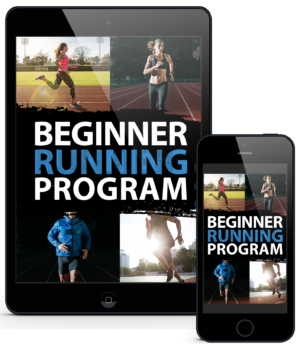Napoleon Bonaparte said, “The first virtue in a soldier is endurance of fatigue; courage is only the second virtue.”
Endurance reigns supreme—it always has, and always will. Therefore, dear readers, you cannot ignore the importance of regularly running and rowing and biking and swimming. To become the athlete you daydream about, cardiovascular endurance needs a big space in your training program.
And when it comes to cardio, the BikeErg freaking delivers.
Let’s dive into all-things BikeErg. (And forgive us if you’re immediately compelled to dip into your savings and add a BikeErg to your home gym…)
What is the BikeErg?
The BikeErg is brought to you by the folks who created the Concept2 Indoor Rower and the SkiErg. It uses the same PM5 performance monitor as the rower and SkiErg—so it’ll look familiar. It’s a lightweight, stationary bike designed to make you feel like you’re actually riding outside.
The BikeErg uses flywheel air resistance: the harder you pedal, the more intense and challenging the workout becomes. There’s also a clutch, which lets you freewheel like a standard bike. And like the indoor rower, it has a wide damper range that re-creates the effect of changing gears. You can even customize your BikeErg and add your own bicycle seat, handlebars, or pedals.
What are the benefits of training on a BikeErg?
For the functional fitness athlete, cardiovascular endurance is the foundation on which all fitness sits. Without a solid cardio base, all of your other fitness components (gymnastics, weightlifting, sport-specific training) will certainly suffer. The BikeErg helps build your endurance in a real way—it’s brutally tough.
And if you’re a recreational or competitive cyclist, the BikeErg is even more beneficial. The bike is thoughtfully crafted: it’s designed to make you feel like you’re riding outside.
Who is the BikeErg for?
The BikeErg is ideal for anyone—from competitive athlete to recreational fitness enthusiast to cyclist—who wants to increase their endurance.
For the competitor: The BikeErg offers a brutal cardiovascular workout. Remember: The BikeErg uses flywheel air resistance, so the harder you pedal, the more intense the workout becomes. And if you’re competing in fitness competitions, you need to know how to game the BikeErg to gain a competitive advantage.
For the fitness enthusiast: The BikeErg is low-impact yet potent. So it’s ideal for athletes with limited skill, mobility, and/or strength, as it requires very little of each. The fitness enthusiast will increase their cardiovascular endurance in a safe, controlled way. (Side note: Those who, due to injury, wouldn’t be able to run or row, can usually get a solid workout on the BikeErg.)
For the cyclist: The BikeErg is crafted to make you feel like you’re riding outside. The combination of the clutch, the damper range, and the flywheel air resistance all make you feel like you’re on a trail rather than in your living room. And cyclists can customize their bikes: you can add your own bicycle seat, handlebars, and/or pedals. Overall, it’s a great option for indoor training.
Do I need a certain level of strength, skill or mobility to use a BikeErg?
One of the best things about the BikeErg is that it has a very low barrier to entry. There are almost no strength, skill, or mobility requirements for the BikeErg. All athletes, no matter their level, can get a safe and effective workout on the BikeErg.
The BikeErg is particularly useful for athletes with limited mobility. Almost every joint involved moves through a neutral range of motion. Athletes on the BikeErg don’t reach end-ranges at any joint, and can therefore express their full capacity and get a great workout.
What are the steps to ensure a proper set-up on the BikeErg?
To maximize your power output, and to get the most out of your time, you need a proper set-up on the BikeErg.
Step 1: Adjust the seat height. If the seat is too high, your body will rock from side to side. If the seat is too low, your knee angle will be too tight. Find the sweet spot: Your leg should be fully extended when your heel is resting on the pedal when at the lowest position. This position allows for the most power output. (NOTE: Most folks have too low of a seat height set-up. If your quads blow up every time you get on the BikeErg, there’s a good chance your seat height is too low.)
Step 2: Adjust the handle height/slide. If you’re a cyclist, take measurements from your bike and match them, as closely as possible, to your BikeErg set-up. If you’re not a cyclist, find a position you’re most comfortable with. This set-up will be different for everyone. But for most, the closer and higher the handlebars, the more comfortable it is to breathe and endure. A slight bend in the elbow will likely feel best.
Step 3: Pedal and test. After you’ve adjusted the seat height and handle height/slide, start to pedal. As you pedal, your legs—at the bottom position—should be just shy of full extension. And your arms—at the farthest point while leaning slightly forward—should also be just shy of full lock-out. This is all about trial and error. Experiment with different positions and find what works best. Take note of your seat height and handle height positions so you can save time the next time you get on the BikeErg.
NOTE: With a tool, the seat slide (forward and back) can also be adjusted. However this is only practical if you own the BikeErg.
What are the most common movement errors to avoid?
- Too much head movement. The head should be mostly neutral and still.
- Rocking from side to side. This is mostly due to the seat height being set too high. Make sure the seat height is right for your body.
- Elbows flared out. Elbows should be tucked in towards your body. The angle should be about the same as the angle in your push-up position.
- Too much dorsiflexion or plantarflexion in the ankle. Your ankles should be neutral throughout the revolution. Don’t toe down, and don’t over-flex.
- Poor knee tracking. The knee should track over the ankle. Avoid the knees caving in. And avoid the knees flaring out.
- Slumped posture. The spine should be neutral. Sit tall and look ahead.
Fill the gaps
We all have holes in our training. For endurance athletes, sprinting can be the weakness. For power athletes, endurance workouts are often a feat. Luckily, the BikeErg can fill the gaps in your training. And here are some sample BikeErg workouts that’ll turn your weaknesses into strengths:
BikeErg Sprint Workouts
- Every 2 minutes x 10 sets (20 total minutes): 10/7 cal sprint
- 1 minute on, 2 minutes off x 7 sets (21 total minutes): max cal sprint
- Every 1:15 x 15 sets: 4-sec wind up + 6-sec all out sprint
- Tabata: 20 seconds of work, 10 seconds of rest x 4 minutes
- 9-minute pyramid:
Minute 1: 10 sec sprint, 50 seconds rest
Minute 2: 20 sec sprint, 40 seconds rest
Minute 3: 30 sec sprint, 30 seconds rest
Minutes 4: 40 sec sprint, 20 seconds rest
Minute 5: 50 sec sprint, 10 seconds rest
Minute 6: 40 sec sprint, 20 seconds rest
Minute 7: 30 sec sprint, 30 seconds rest
Minute 8: 20 sec sprint, 40 seconds rest
Minute 9: 10 sec sprint, 50 seconds rest
BikeErg Endurance Workouts
- Bike 3 minutes at moderate pace (70% effort)
Bike 90 seconds at recovery pace
No rest between rounds
- 5 Rounds
Bike 2000m at easy pace (60% effort)
Bike 2000m at moderate pace (70% effort)
Bike 1000m at hard pace (80% effort)
Rest 1 minute between rounds.
- 4 Rounds
Bike 4000m at easy pace (60% effort)
Rest 1 minute between rounds
Notes: Bike the last 500m of every round standing at damper 10.
- 3 Rounds
Bike 10 minutes at easy pace (60% effort)
Bike 5 minutes at recovery pace
No rest between rounds.
- 8 Rounds
Bike 3 minutes at hard pace (80% effort)
Bike 2 minutes at easy pace (60% effort)
No rest between rounds.
(More BikeErg Endurance workouts.)
For the Cyclists
If you’re a cyclist, here are five BikeErg workouts to try:
BikeErg Cyclist Workouts
- 5 Rounds
1:40 work/:20 rest, increasing cadence each round
2 minute rest
4 Rounds
1:40 work/:20 rest, increasing damper resistance each round
(This workout is pre-programmed on the PM)
- 30 minutes max effort
- 10 Rounds
1000m hard, 1 minute easy - 5 Rounds
9 minutes at steady state
3 minutes at threshold - For Distance
3 minutes hard, 1 minute easy
2 minutes hard, 2 minutes easy
4 minutes hard, 1 minute easy
30 seconds hard
(Simulates hill climbs)
BikeErgs versus other exercise bikes: What’s the difference?
The BikeErg really is unique. Here’s what makes it different:
- The BikeErg uses flywheel air resistance: the harder you pedal, the more intense and challenging the workout becomes. There’s also a clutch, which lets you freewheel like a standard bike. And like the indoor rower, it has a wide damper range that re-creates the effect of changing gears.
- The BikeErg is designed like a traditional spin cycle, but instead of using a weighted flywheel, it uses a fan system. Unlike the Air Bike, the BikeErg feels more like cycling outdoors—the handlebars don’t move. Therefore cyclists might find the BikeErg is a better fit for their training.
Warm up, cool down, and work out
There are almost no eccentric contractions involved when riding the BikeErg. And eccentric contractions are the biggest culprit for DOMS (Delayed Onset Muscle Soreness). Because of the lack of eccentric contractions, it’s very difficult to get sore from the BikeErg.
And because of the lack of eccentric contractions, tissues really don’t need to be prepped in order to start moving on the bike. So the BikeErg makes a great tool for warm-ups, cool-downs and quick, intense sessions.
Key Takeaways
The BikeErg is an exceptional piece of equipment that’s a great addition to any gym. It’s ideal for both beginner athletes and advanced athletes. It’s perfect for cyclists who need indoor training options.
And whether you’re looking for a way to rehab your knee, or add a monostructural cardiovascular component to your workouts, the BikeErg will deliver.
Final thoughts:
- The BikeErg is for any athlete at any level. There is a very low barrier to entry.
- The BikeErg is ideal for cyclists who need indoor training options.
- Make sure you set the seat up properly to ensure your safety and efficacy.
- Endurance athletes should perform BikeErg sprints to fill gaps in their training. Power athletes should perform BikeErg endurance-type workouts to fill gaps in their training. Cyclists should perform workouts that mimic outdoor sessions/races.
- The BikeErg uses flywheel air resistance: the harder you pedal, the more intense and challenging the workout becomes.
There are almost no eccentric contractions involved when riding the BikeErg, so you won’t experience much DOMS after a BikeErg session.

